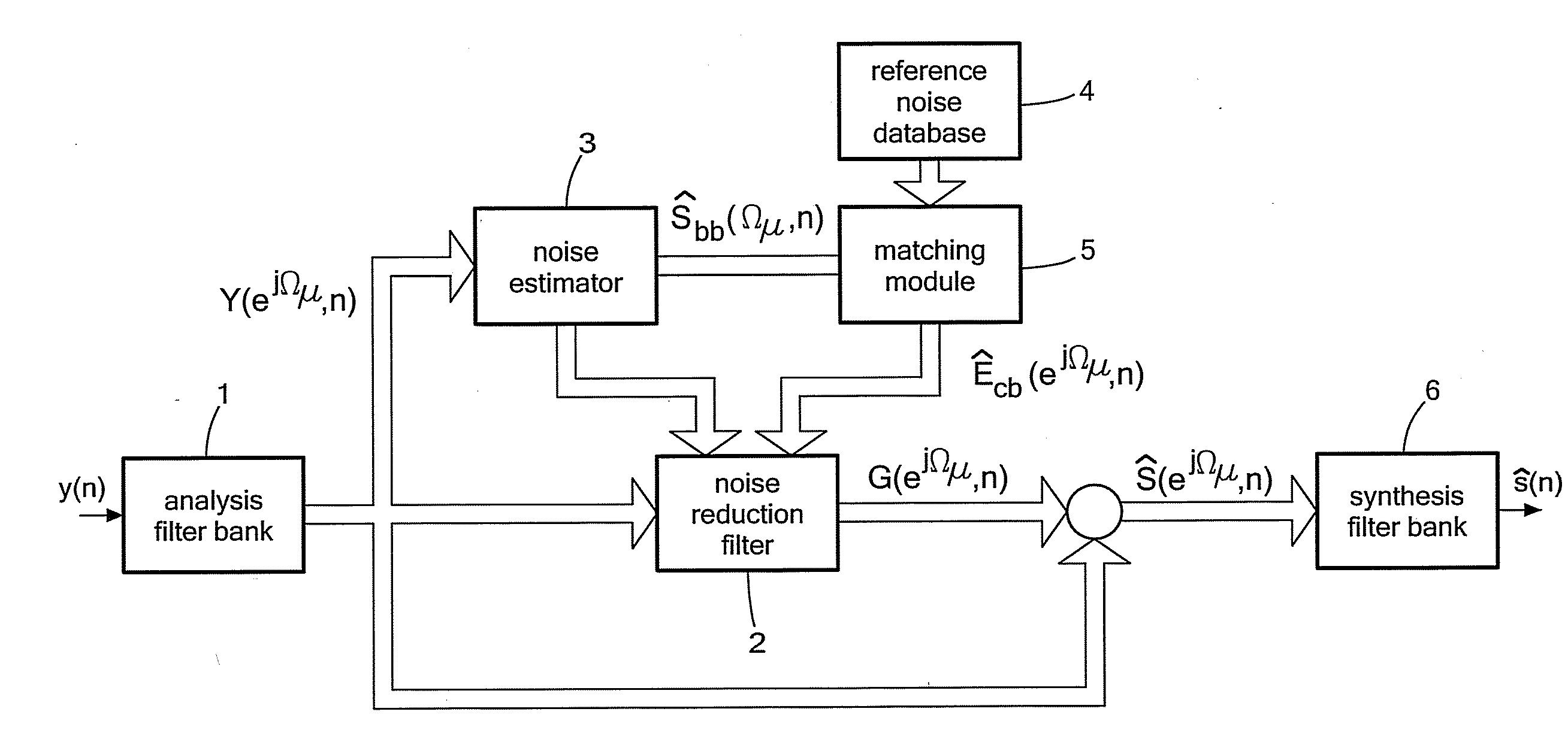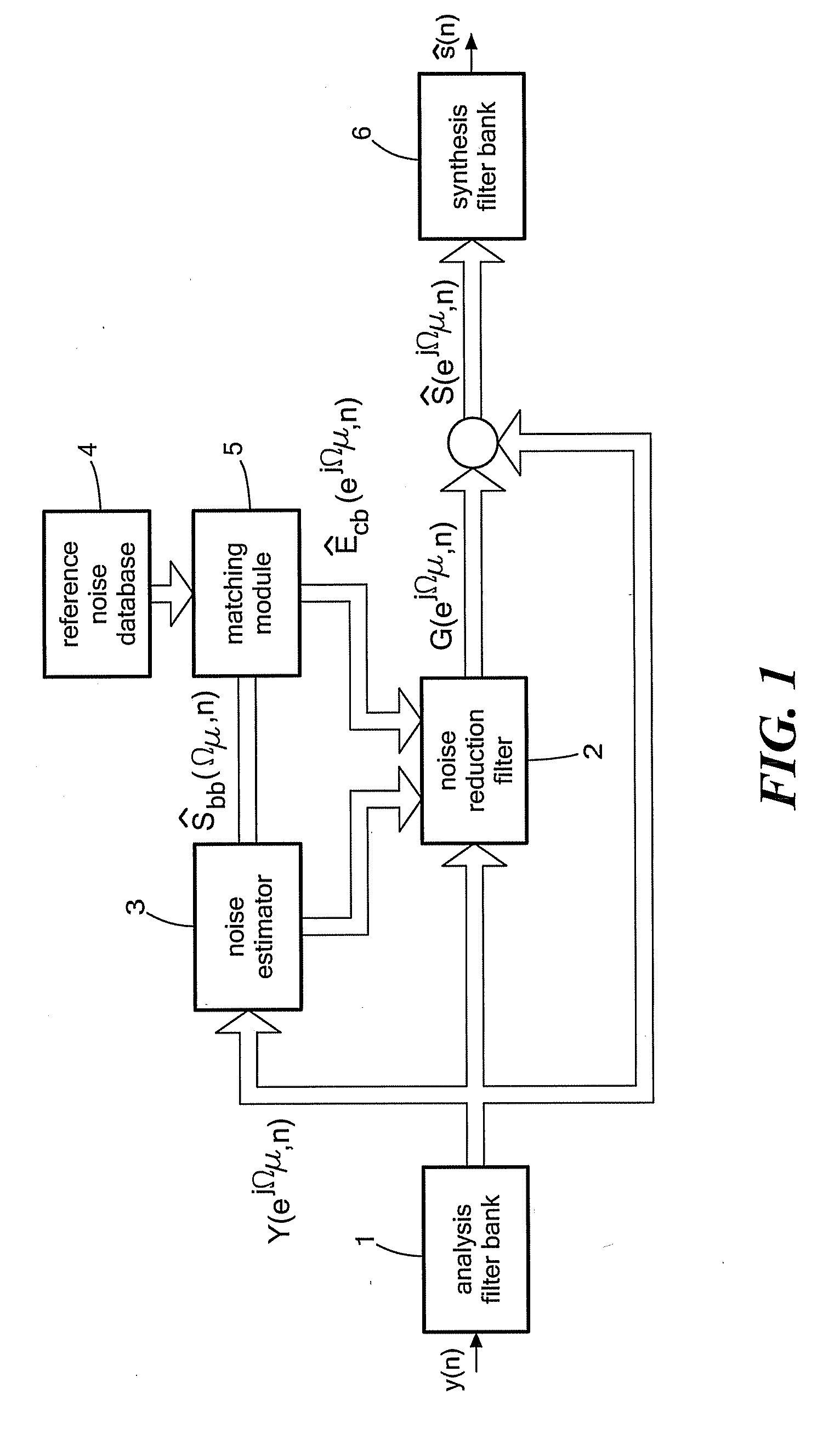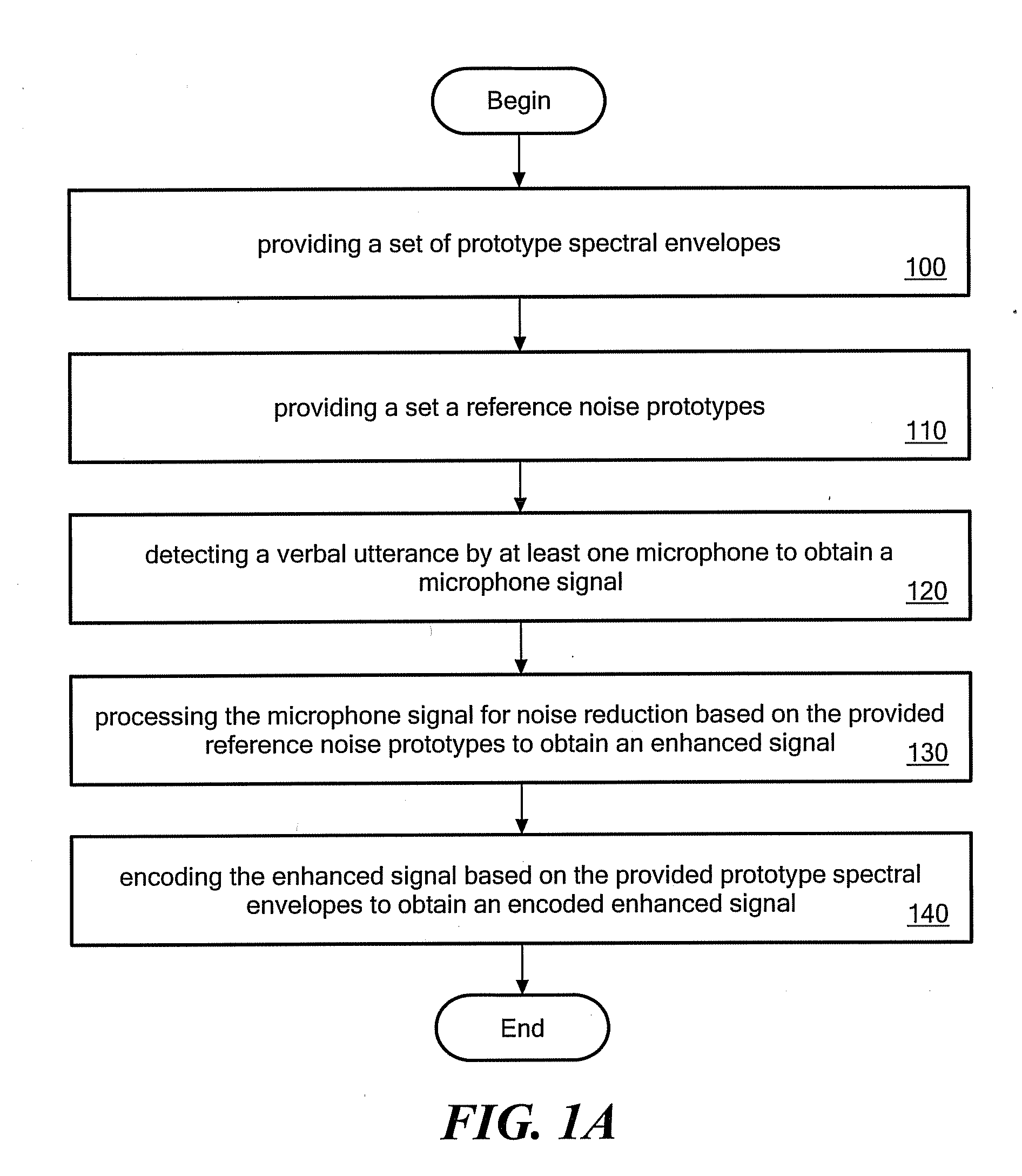Noise-Reduction Processing of Speech Signals
a technology of speech signals and noise reduction, applied in the field of noise reduction processing of speech signals, can solve the problems of speech signals, deterioration of audio signals, and deterioration of voice conversation quality and intelligibility, and achieve the effects of reliable noise reduction, fast convergence, and rapid processing
- Summary
- Abstract
- Description
- Claims
- Application Information
AI Technical Summary
Benefits of technology
Problems solved by technology
Method used
Image
Examples
Embodiment Construction
[0033]Embodiments of the present invention are directed to signal processing systems and methods for reducing cabin noise within an automobile. The signal processing methodology may be embodied as computer program code that operates to reduce noise due to changing sound conditions within the automotive cabin. FIG. 1A is a flow chart that demonstrates the basic methodology. First a set of prototype spectral envelopes is provided. 100 The spectral envelopes may be stored in memory or in a database and retrieved by a processor. It should be recognized that the system and methodology may be implemented with one or more processors without diverging from the subject matter of the invention. The processor then retrieves from a memory location a set of reference noise prototypes. 110. The reference noise prototypes are obtained from at least a sub-set of the provided set of prototype spectral envelopes. The processor detects a verbal utterance by at least one microphone to obtain a micropho...
PUM
 Login to View More
Login to View More Abstract
Description
Claims
Application Information
 Login to View More
Login to View More - R&D
- Intellectual Property
- Life Sciences
- Materials
- Tech Scout
- Unparalleled Data Quality
- Higher Quality Content
- 60% Fewer Hallucinations
Browse by: Latest US Patents, China's latest patents, Technical Efficacy Thesaurus, Application Domain, Technology Topic, Popular Technical Reports.
© 2025 PatSnap. All rights reserved.Legal|Privacy policy|Modern Slavery Act Transparency Statement|Sitemap|About US| Contact US: help@patsnap.com



